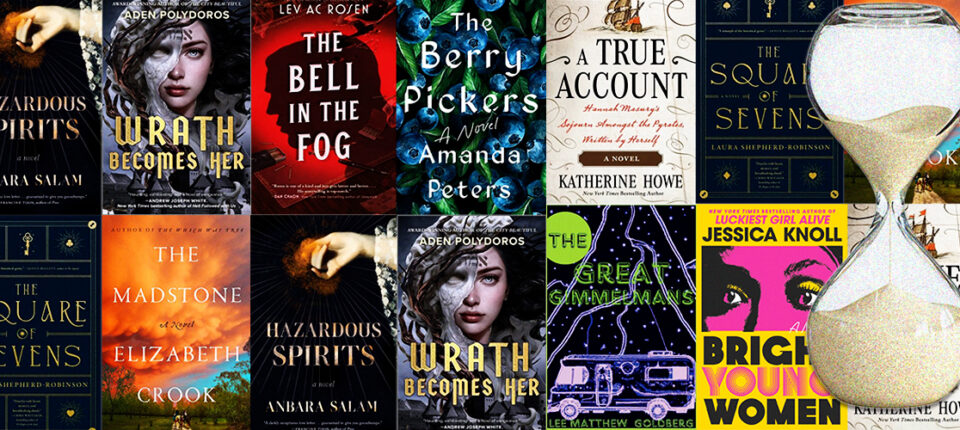Feeling an itch to cool down in the (literally) lower temperatures of yesteryear? Look no further than the list below, featuring 9 upcoming works of historical fiction, each speaking to the anxieties of the present through the lens of the past. Notably present on the list below are quite a few lovable con artists and criminals (because this is a crime fiction site) but also because crime has always been the dark mirror of capitalism, and we are living in a new era of unfettered accumulation in which the con artist is king, and the sucker is merely to be pitied. We especially saw this in last year’s biggest historical novel, Trust, and the books below should please any fans of that magnum opus.
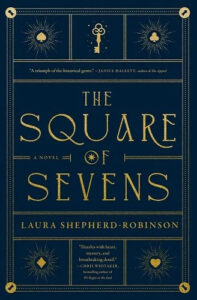
Laura Shepherd-Robinson, The Square of Sevens
(Atria, September 5)
Setting: Bath and London, 1730s and 40s
In this lush gothic, a young girl who knows the art of predicting fortunes becomes ward to a kind intellectual, who raises her in safety and anonymity in 18th-century Bath. As she grows into a poised young woman, she finds herself increasingly curious about her fairy-tale origins, in which her fortune-teller father ran away with her aristocratic mother. When a chance comes to know more of her history, she takes it, even as a larger conspiracy threatens her found family.

Katherine Howe, A True Account: Hannah Masury’s Sojourn Amongst the Pyrates, Written by Herself
(Henry Holt, November 21)
18th Century Caribbean
I’m going to be very honest—you had me at “pyrates,” Katherine Howe. But the book gets even better than that. It’s the story of Marian Beresford, a professor in the 1930s who comes across an account of a young woman living in eighteenth century Boston who disguises herself as a boy and joins a pirate crew, in hopes to track down a treasure in the Caribbean. But as she comes to identify with the woman—Hannah—she also suspects that she might have been hiding something. Shiver. Me. Timbers. –Olivia Rutigliano, CrimeReads Associate Editor
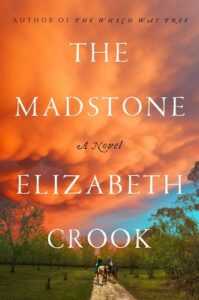
Elizabeth Crook, The Madstone
(Little, Brown, November 7)
Setting: Texas, 1868
Elizabeth Crook is already a household name in Texas, but The Madstone should establish her as a national figure, evoking the works of Charles Portis and Larry McMurtry as we go on a harrowing (and sometimes humorous) ride through 1868 Texas. The Madstone follows a young German Texan as he travels from the Hill Country to the Gulf Coast trying to shepherd a woman and her young child to safety, and find his own way to maturity and understanding the world around him.
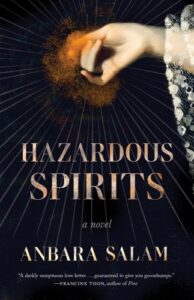
Anbara Salam, Hazardous Spirits
(Tin House, October 17)
Setting: England, 1920s
This charming, evocative, and very well-researched book is about Evelyn Hazard, a young woman in 1920s Edinburgh whose husband claims he can communicate with the dead, and the madness that ensues from their getting sucked into the wildly eccentric Spiritualist movement. Unsure if her husband is a fraud or if the entire metaphysical world she has come to know is a lie, Evelyn must guard herself and her life, especially after things begin to unravel and secrets come to light. If you need me, I will be reading this in bed with a flashlight. –OR

Aden Polydoros, Wrath Becomes Her
(Inkyard, October 10)
Setting: Poland, 1940s
In this gorgeously written, brutally powerful take on the Golem legend, a teenage girl is killed in the Holocaust and brought back by her father as a clay creature, seeking vengeance. Her violence is effective, but soon channeled for more than vengeance, and she must take a stand against those who would exploit her for evil.
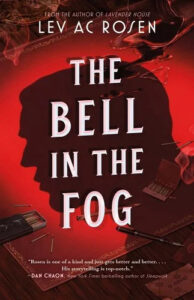
Lev AC Rosen, The Bell in the Fog
(Forge, October 10)
Setting: Los Angeles, 1950s
Lev Rosen’s Lavender House perfectly captured its 1950s setting while bringing queer stories to the fore. It also introduced a detective I’d follow through any number of books, Evander (Andy) Mills, so it’s great to see the private dick return for a new foray into the shadows of a repressed, but vibrant, era. In The Bell in the Fog, Rosen’s detective has set up shop above a gay bar offering investigative services to the queer community when he receives a visit from an old flame from the Navy. The ex is being blackmailed, and the further Andy digs, the more dangerous his sleuthing becomes.

Amanda Peters, The Berry Pickers
(Catapult, October 31)
Maine and Massachusetts, 1960s-2010s
The Berry Pickers is a sensitive and devastating saga of families broken, children stolen, and fierce reckonings with the traumas of history. As the novel begins, a 4-year-old Mi’kmaq child goes missing, her disappearance sending her loved ones into their own private hells. We’re then introduced to a girl growing up with a paranoid mother and an aloof father, dreaming of another family and wondering at her parents’ reticence when it comes to her earliest years. The novel starts in 1962 and spans over 50 years, with an emotional climax that will leave most readers with at least a tear in their eye.

Jessica Knoll, Bright Young Women
(S&S/MarySue Rucci)
Setting: Florida Panhandle, 1970s
Jessica Knoll is a careful writer, and this, her third novel, is a perfect match for her cold dissection of social mores and her fierce rage at misogyny. Knoll takes on the story of Ted Bundy, told from the perspective of a student who survives a horrific attack on a sorority house. She then must fight to preserve her sisters’ dignity and get the truths of their last moments as the world around them fetishizes their killer and attempts to make jokes of their deaths. Some may claim that the crime genre is rift with misogyny; those people have not read Jessica Knoll. She tears apart the restrictive world of women’s roles and lays bare the purpose of such hobbles: to keep women from making a scene, to keep them from seeking justice, and most of all, to keep them from seeking their own lives.

Lee Matthew Goldberg, The Great Gimmelmans
(Level Best Books, November 14)
Setting: 1980s Eastern Seaboard (and then some California)
Sometimes, desperation can unveil new skills—at least, that’s what happens to the Gimmelman family after they lose their money in the Crash of 87 and find themselves surprisingly good at recouping their finances in a rather risky way. Specifically, robbing banks. Lee Matthew Goldberg has crafted an uproarious send-off of American capitalism in its greediest decade, and created a lovable bunch of outlaws to boot.

